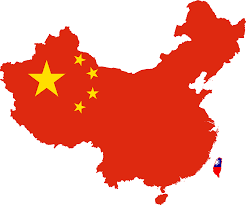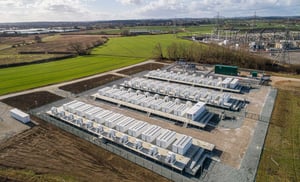Even as the global economy grapples with the tightening grip of protectionism and shifting trade dynamics, China’s latest economic data offers a compelling glimpse into a market that remains resolute, resilient and increasingly driven by innovation. With early 2025 figures showing a solid start to the year, investors have new reasons to reconsider their outlook on the world’s second-largest economy.
China’s first-quarter performance paints a picture of steady, high-quality growth. Gross domestic product rose by 5.4 percent year on year to reach 31.88 trillion yuan ($4.4 trillion), with a 1.2 percent uptick from the previous quarter. This growth trajectory, amid persistent global uncertainty, signals more than short-term recovery—it points to an economy steadily rewiring itself for long-term sustainability. According to Sheng Laiyun of the National Bureau of Statistics, China’s strategy of merging technological innovation with industrial transformation is bearing fruit, ushering in new engines of growth across sectors.
The momentum is reinforced by China’s experience in navigating past crises, from global financial downturns to pandemic-induced shocks. The latest policy measures—introduced in September 2024—have been instrumental. Incremental yet impactful, they have reinforced macroeconomic stability and bolstered confidence among investors and consumers alike.
Consumption has emerged as a central pillar of this recovery. Retail sales grew by 4.6 percent year on year in Q1, outpacing the 3.5 percent growth recorded for all of 2024. Disposable income gains outstripped GDP growth, suggesting a stronger employment market and improving household finances. Stabilising prices—evidenced by the easing CPI decline—further indicate a healthier demand-supply balance, creating an environment conducive to sustained consumer activity.
More importantly, consumer behaviour is evolving. There’s a discernible shift toward higher-quality goods and service-oriented spending. Service retail outperformed overall retail growth, while digital and green consumption sectors showed vigorous expansion. Online retail sales rose 5.7 percent, and new-energy vehicle sales surged by 34 percent to 2.05 million units. The trade-in programme for consumer goods, backed by ultra-long-term bonds, has amplified this momentum, with appliance and smartphone sales responding strongly to government incentives.
Investment, too, is undergoing transformation. Fixed asset investment rose by 4.2 percent in Q1, or 8.3 percent excluding real estate. Infrastructure spending is no longer solely the Central Government’s domain—local governments have joined the effort, supported by more flexible fiscal policy. High-growth sectors like smart equipment, mobile internet and high-end manufacturing attracted record levels of private equity, with year-on-year investment in these areas skyrocketing by over 300 percent. These capital flows are fuelling the development of “new quality productive forces”—a phrase that captures the pivot toward innovation-led, tech-centric economic expansion.
Foreign trade, long a cornerstone of China’s growth, remains robust even in the face of trade barriers and geopolitical tensions. In Q1, exports jumped by 6.9 percent to over 6 trillion yuan ($821 billion), with trade growing across more than 170 global markets. Private enterprises are leading the charge, contributing nearly 57 percent of total trade and driving gains in high-tech exports. Notably, the equipment manufacturing sector accounted for nearly half of all trade, a sign of China’s shift up the value chain.
Trade with EU countries, ASEAN nations, and Belt and Road partners also posted impressive gains. Meanwhile, domestically developed brands now account for nearly a quarter of China’s total exports, underscoring their rising competitiveness. Export activity in bonded zones climbed nearly 19 percent, confirming that global demand for Chinese products remains resilient despite the international turbulence.
Nevertheless, uncertainties persist. The OECD and IMF have downgraded global growth expectations, while the U.S.-China trade dynamic continues to evolve. China is responding with a dual strategy: reinforcing foreign trade resilience while deepening its domestic market. Lu Daliang of the General Administration of Customs pointed to China’s vast internal market as a bulwark against external shocks. Redirection of export products toward domestic consumption is now a clear policy priority, supported by quality standards that meet international benchmarks.
Fiscal measures are also evolving. Government procurement, export tax rebates, and streamlined administrative procedures are all being deployed to shield vulnerable sectors and help exporters diversify beyond traditional markets. Provinces heavily reliant on U.S. trade are receiving targeted support, giving local governments more room to cushion external impacts and support enterprise adaptation.
In the face of a volatile global outlook, China’s economic engine continues to generate forward momentum. A combination of targeted stimulus, rising domestic consumption, and a pivot to tech-driven growth is remapping its trajectory. For investors seeking stability and long-term opportunity, China’s data-driven approach and adaptive policymaking offer a compelling case for engagement.
Fidelity China Special Situations PLC (LON:FCSS), the UK’s largest China Investment Trust, capitalises on Fidelity’s extensive, locally-based analyst team to find attractive opportunities in a market too big to ignore.








































